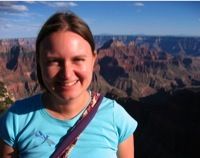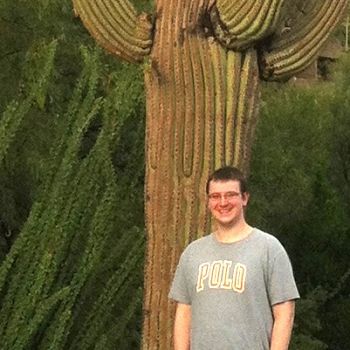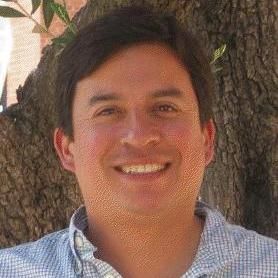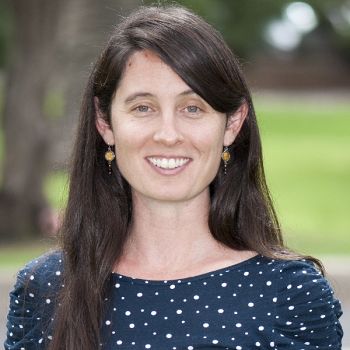Critical Zone Profiles - Meet the people doing CZO science (Catalina-Jemez CZO)
19 Mar 2015
Get a sense of the people and the work. Several members of the Catalina-Jemez CZO are profiled here, including students and professors.
What kind of work do critical zone scientists do? Who are some of the scientists working at Critical Zone Observatories across the country? How does their work inform our understanding and management of critical zone resources, such as water, soil, and food?
These brief profiles feature just a few of the 250+ senior scientists, university faculty, postdoctoral researchers, and graduate students who work at the nine CZO sites currently funded by the National Science Foundation. CZO people are cross-disciplinary scientists who have expertise in fields including hydrology, geochemistry, geomorphology, ecology, biology, and climatology. More profiles will be added over time, as new scientists join the CZO teams.
The profiles provide a non-technical introduction to the work CZO people do. Each scientist was asked to respond to the following questions:
1. What is the goal of your work?
2. How is your work relevant to the science community and to the larger human communities in which we live?
3. Why is studying the critical zone important?
4. How has the CZO network been valuable to you in your work?
5. How can the CZOs help improve our understanding and management of natural resources?
Profiles: Grad Students | Early Career | Boulder | Calhoun | Catalina-Jemez | Eel | IML | Luquillo | Reynolds | Shale Hills | Southern Sierra | and more profiles coming
CATALINA-JEMEZ CZO
CHRISTOPHER SHEPARD (soil researcher, PhD student)
My research provides insights into how soil properties change across watersheds and at different depths. The primary goal of my research is to find new ways to map how soils change across a watershed using a technique called digital soil mapping, or DSM. We can apply DSM techniques and gain insights into how certain soil properties are distributed across a watershed or across an agricultural field. While we often think of agricultural fields as being relatively uniform, in reality, the soil properties from one yard to the next may be quite different. If a farmer had a better understanding of which nutrients were available across her field, she could use less fertilizer, potentially saving money as well as limiting pollution. Visit Christopher's profile >
JENNIFER MCINTOSH (Hydrobiogeochemist, Associate Professor)
Water supplies for cities in the western U.S. originate primarily from winter precipitation in the high mountains – which means that the amount and timing of snowmelt are critical determinants of available water resources in this region. Climate change is reducing the amount of precipitation falling as snow, while fires, drought, and insect infestation are causing widespread mortality of forests from Mexico to Canada. My work is aimed at understanding how climate change and forest fires will affect water availability and quality for future generations. Visit Jennifer's profile >
KYLE TROSTLE (geochemist, postdoctoral researcher)
The critical zone is responsible for the production of many of the renewable resources that we all depend upon for life, including agricultural soils and clean drinking water. In order to understand how critical zone systems may respond to climatic change, we first need to know how they work under current conditions. I am currently studying the relationship between stream water discharge and stream water chemistry at the Jemez River Basin Santa Catalina Mountains Critical Zone Observatory (JRB-SCM-CZO). Visit Kyle's profile >
XAVIER ZAPATA-RIOS (hydrologist, PhD student)
The Critical Zone (CZ) is a very thin surficial layer of the planet that extends from the base of the weathered bedrock to the top of the vegetation canopy. The CZ is the place where atmosphere, water, solar energy, plants, and rocks interact and drive chemical, physical, biological, and geological processes. This is the layer of the planet that sustains life. As part of my PhD investigation, I have been studying how mineral weathering influences soil development and releases nutrients to the soil and water. This is one of the fundamental processes we are trying to understand as it involves the consumption of CO2 from the atmosphere and defines the chemical composition of natural waters. Visit Xavier's profile >
RACHEL GALLERY (microbial biologist, assistant professor)
Plant-microbe interactions and feedbacks are important but cryptic components of how ecosystems function and respond to change. Despite their fundamental importance, the distributions of microbial genotypes are largely unknown, their interactions with plants and animals are not well understood, and the complexity of microbial communities is too often inelegantly over simplified. As we consider the threat of species loss and how plant communities will continue to shift in response to rapidly altered temperature and precipitation patterns, the need to understand plant-microbe feedbacks emerges as a critical focus. Visit Rachel's profile >
Explore Further







